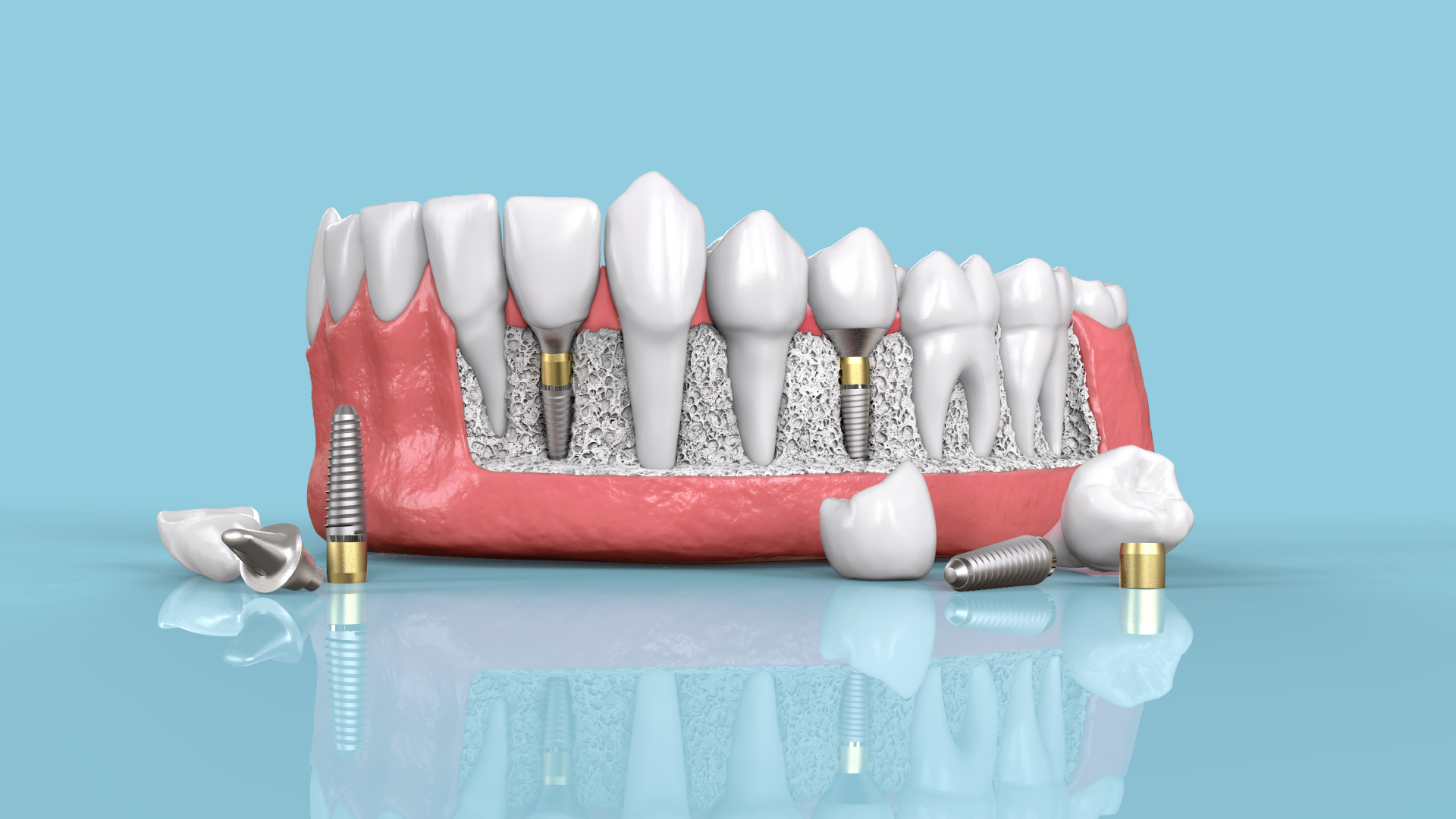One of the crucial aspects of dental implant procedures is patient selection. Before embarking on any dental implant treatment, it is imperative to thoroughly assess the patient’s suitability for the procedure. This involves considering various factors, including the patient’s medical history, the impact of medical conditions on implant healing, and conducting radiographic and clinical examinations for a comprehensive assessment.
Importance of thorough medical history
When it comes to dental implant treatment planning, a thorough understanding of the patient’s medical history is of utmost importance. Certain medical conditions can significantly affect the success of dental implants. Conditions such as diabetes, immunosuppressive diseases, irradiation of the jaws, and smoking can have an adverse impact on the healing process. By carefully evaluating the patient’s medical history and identifying potential risk factors, dental professionals can determine the suitability of a patient for dental implant procedures.
Impact of medical conditions on implant healing
Patients with certain medical conditions may require special considerations during the dental implant treatment planning process.
For example, patients with a history of diabetes may experience delayed healing and increased risk of complications.
Similarly, individuals with immunosuppressive diseases may have compromised immune systems, which can affect the success of dental implants. By identifying these conditions and working closely with the patient’s healthcare team, dental professionals can develop a comprehensive treatment plan that addresses potential challenges and ensures the best possible outcome.
Radiographic and clinical examinations for assessment
Radiographic examinations, such as periapical films and cone beam computed tomography (CBCT), play a crucial role in dental implant treatment planning. These imaging techniques provide detailed information about the patient’s bone structure, enabling dental professionals to assess bone availability for implant placement. By evaluating the existing conditions and bone quality, dental professionals can determine the optimal position and angulation for implant placement.
In addition to radiographic examinations, clinical evaluations are equally important. Oral pathology screening helps identify any underlying oral health issues that may affect the success of dental implants. Occlusal evaluations assess the patient’s bite alignment and occlusal forces, ensuring that the implants can withstand the functional demands. Periodontal assessments help determine the health of the gums and surrounding tissues, which is crucial for implant success. By combining radiographic and clinical examinations, dental professionals can gather essential information to guide their treatment planning decisions.
Key Factors in Treatment Planning for Dental Implants
Treatment planning for dental implants involves considering several important factors. From a comprehensive diagnosis of the patient’s medical history to the utilization of advanced technologies, each step in the treatment planning process plays a crucial role in the success of dental implant procedures.
Thorough diagnosis of patient’s medical history
To develop an effective treatment plan for dental implants, a thorough diagnosis of the patient’s medical history is essential. This includes evaluating the patient’s overall health, understanding any existing medical conditions, and considering medications that may impact the healing process. By taking these factors into account, dental professionals can tailor the treatment plan to meet the specific needs and ensure the long-term success of the dental implants.
Radiographic examinations and their importance
Radiographic examinations are an integral part of treatment planning for dental implants. These imaging techniques provide valuable information about the patient’s bone structure, density, and anatomy. Periapical films and cone beam computed tomography (CBCT) are commonly used to assess bone availability, identify anatomical structures, and plan the optimal implant placement. By utilizing radiographic examinations, dental professionals can accurately determine the most suitable implant size, location, and angulation.
Clinical examinations and their role in planning
Clinical examinations are equally significant in the treatment planning process for dental implants. These examinations help evaluate the patient’s oral health status, including the condition of the gums, teeth, and surrounding tissues. Oral pathology screening aids in identifying any existing oral diseases or abnormalities that may affect the success of dental implants. Occlusal evaluations assess the patient’s bite alignment and occlusal forces, ensuring that the implants can withstand natural chewing forces. Periodontal assessments provide insights into the health of the gums and supporting structures, which is vital for long-term implant success. These clinical examinations allow dental professionals to develop a comprehensive treatment plan that addresses any existing oral health issues and ensures the optimal conditions for successful dental implant placement.
Utilizing Advanced Technologies in Dental Implant Treatment Planning
Advancements in technology have revolutionized the treatment planning process for dental implants. These innovations have enhanced the accuracy, predictability, and overall success of dental implant procedures. By leveraging advanced technologies, dental professionals can achieve precise implant placement and improve patient outcomes.
Role of CBCT in assessing bone availability
Cone beam computed tomography (CBCT) has become an indispensable tool in dental implant treatment planning. CBCT provides three-dimensional images of the patient’s oral and maxillofacial structures, allowing dental professionals to assess bone availability with unparalleled accuracy. This technology enables precise measurements of bone volume, density, and quality, facilitating optimal implant placement. By utilizing CBCT, dental professionals can customize the treatment plan based on the patient’s unique anatomical features and ensure the long-term success of dental implants.
Utilization of digital technology for virtual planning
Digital technology has transformed treatment planning for dental implants, allowing for virtual planning and increased precision. By utilizing specialized software, dental professionals can simulate the implant placement process digitally. This virtual planning enables them to assess different treatment options, determine the ideal implant size and angulation, and create surgical guides for precise implant placement. Digital technology also allows for the creation of prosthetic designs that can be customized to achieve optimal aesthetic and functional outcomes. By incorporating digital technology into the treatment planning process, dental professionals can enhance the predictability and accuracy of dental implant procedures, resulting in improved patient satisfaction.
Advancements in resonance frequency analysis (RFA) for implant stability
Resonance frequency analysis (RFA) is a valuable tool for assessing implant stability during the treatment planning process. RFA measures the stability of implants by analyzing the vibrations produced when a small mechanical stimulus is applied. This technique provides quantitative data, known as the Implant Stability Quotient (ISQ), which indicates the level of osseointegration and the overall stability of the implants. RFA allows dental professionals to monitor implant stability throughout the healing process and make any necessary adjustments to ensure the long-term success of dental implants. By incorporating RFA into the treatment planning process, dental professionals can achieve optimal implant stability and improve treatment outcomes.
Ensuring Successful Dental Implant Treatment through Comprehensive Planning
Dental implants have established themselves as a preferred approach for tooth replacement due to their high success rate and numerous advantages. To ensure successful dental implant treatment, comprehensive planning is essential. By considering various factors and advancements in treatment planning, dental professionals can optimize patient outcomes and achieve long-term success.
High success rate and advantages of dental implants
Dental implants offer numerous advantages over other tooth replacement options, making them a popular choice for patients and dental professionals alike. They have a high success rate and can provide better longevity and prognosis compared to alternative treatments. Dental implants also help preserve bone structure, reducing bone loss over time.
Additionally, they offer improved aesthetics, functionality, and patient satisfaction. With proper treatment planning and execution, dental implants can significantly enhance a patient’s quality of life.
Considerations for complex cases and patient commitment
While dental implants have a high success rate, some cases may be more complex and require additional considerations. Patients with certain medical conditions or compromised oral health may experience challenges during implant treatment. It is crucial to carefully evaluate each patient’s individual factors and determine their suitability for dental implant procedures.
Additionally, successful outcomes depend not only on the skills and expertise of the dental professional but also on the commitment and cooperation of the patient. Patients must follow post-operative instructions, maintain good oral hygiene, and attend regular follow-up visits to ensure the long-term success of dental implants.
Advancements and considerations for successful treatment planning
Advancements in technology have significantly influenced treatment planning for dental implants. The utilization of CBCT for three-dimensional assessment of bone availability has revolutionized implant placement precision. Digital technology allows for virtual planning, creating prosthetic designs, and optimizing aesthetic outcomes. Resonance frequency analysis (RFA) provides valuable insights into implant stability, enabling dental professionals to monitor osseointegration and make informed decisions during the treatment process. By staying up-to-date with these advancements and considering individual patient factors, dental professionals can ensure successful treatment planning and achieve optimal outcomes for their patients.
FAQs
What is involved in dental implants treatment planning?
Dental implants treatment planning involves a thorough assessment of the patient’s medical history, including any existing medical conditions, medications, and lifestyle factors. Radiographic examinations, such as cone beam computed tomography (CBCT), help evaluate bone availability and quality for implant placement. Clinical examinations, including oral pathology screening, occlusal evaluations, and periodontal assessments, provide insights into the patient’s oral health and condition. Advanced technologies, such as virtual planning software and resonance frequency analysis (RFA), are also utilized to enhance the precision and success of dental implant treatment planning.
How long does the dental implants treatment planning process take?
The duration of the dental implants treatment planning process can vary depending on various factors, including the complexity of the case and the availability of advanced technologies. In some cases, treatment planning can be completed within a few days or weeks. For more complex cases, it may take several weeks or even months to gather all the necessary information and create a comprehensive treatment plan. It is essential to allow sufficient time for thorough diagnosis, radiographic examinations, clinical evaluations, and consultations with the patient to ensure the success of the treatment.
What factors are considered during dental implants treatment planning?
Several factors are considered during dental implants treatment planning. These include the patient’s medical history, bone availability and quality, occlusal considerations, periodontal health, and aesthetic goals. It is also important to assess any existing oral health issues that may impact the success of dental implants. In addition to these factors, advancements in technology, such as CBCT imaging and virtual planning software, play a vital role in treatment planning, providing valuable insights and enabling precise implant placement.
What are the key steps in successful dental implants treatment planning?
Successful dental implants treatment planning involves several key steps. These include:
- Thorough diagnosis of the patient’s medical history and evaluation of their suitability for dental implant procedures.
- Radiographic examinations, such as cone beam computed tomography (CBCT), to assess bone availability and quality for implant placement.
- Clinical examinations, including oral pathology screening, occlusal evaluations, and periodontal assessments, to evaluate the patient’s oral health status.
- Utilization of advanced technologies, such as virtual planning software, to simulate the implant placement process and create surgical guides.
- Consideration of individual patient factors, such as medical conditions, lifestyle, and aesthetic goals, to tailor the treatment plan accordingly.
- Ongoing monitoring of implant stability using techniques like resonance frequency analysis (RFA) throughout the healing process to ensure the long-term success of dental implants.
By following these key steps and considering various factors, dental professionals can develop a comprehensive treatment plan that maximizes the chances of successful dental implant outcomes.






